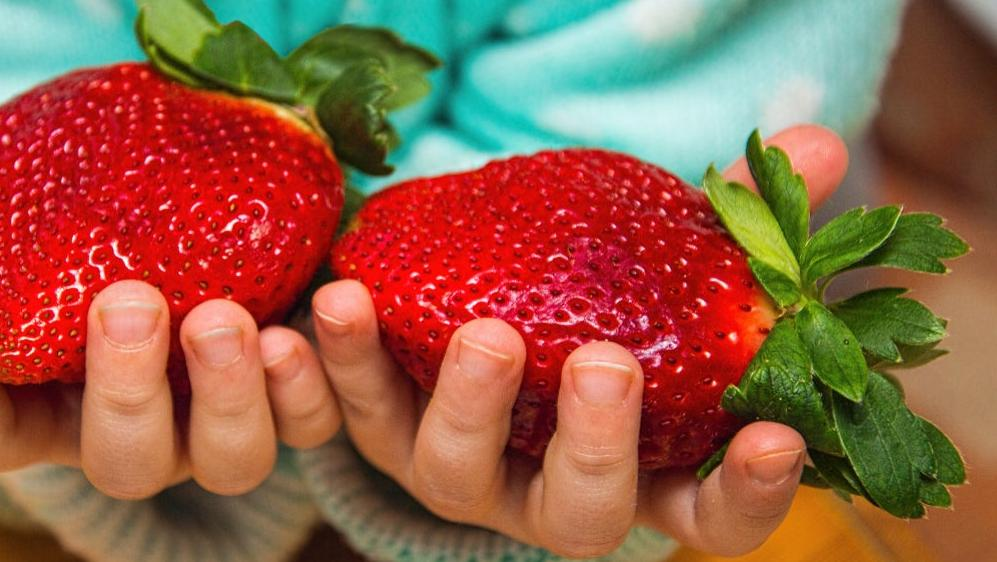You're Not Seeing Things—Fruits Really Are Getting Bigger
Why is so much fresh produce suddenly so large? A few reasons.
Shrinkflation—the economic shell game in which a product shrinks in size but its price remains the same—has impacted countless grocery store faves over the last few years. From bags of Doritos to pantry staples, no product seems safe. However, one food group seems to have experienced the inverse phenomenon: While processed foods keep getting smaller, fresh produce only seems to have gotten bigger. What's with all the giant fruit?
I began noticing this a while ago, particularly with blueberries. After opening the box, I checked the label to make sure I didn't accidentally purchase an exotic blueberry relative, as these fruits were literally triple the size of what I was accustomed to. And despite the old adage to the contrary, bigger is not always better. These jumbo blueberries were a much softer, mushier texture that frankly grossed me out. I love the firmness and tartness of small blueberries, and I love to pop them into my mouth like M&M's. I'm not alone in this thinking, either: A Spoon University writer agrees that the small ones taste better, despite many people's preference for the big, sweet, gooier blueberries. Expect this to be a contentious issue in the 2024 election.
Blueberries aren't the only fruit experiencing this phenomenon. If you've bought a box of strawberries lately, you've probably noticed that the previously bite-sized berries are now the size of small islands. Delish certainly noticed this (proving that I haven't been doing too many mushrooms) and found that there are a few reasons for the ballooning produce. For one, the larger berries have a longer shelf life, making them practical to sell. Additionally, farmers make more money when they fill more boxes with fewer, larger strawberries. It's also easier to pick large strawberries because they're more visible on the plant and easier to grab. Perhaps we should update the saying "stuck out like a sore thumb" to "stuck out like a large strawberry."
This might also explain why the phenomenon has extended to apples. My favorite variety is Golden Delicious, and at my local grocery store, the smaller yellow apples—which I've always enjoyed partially because of their perfect size—are placed in bags and sold in bundles. If you want to purchase just one or two apples, you have to go for the jumbo ones. As a single person, I can't eat an entire bag of apples before they start going bad, so I have no choice but to buy individual giant apples—but they're so big I can only eat half of one at a time, so I have to save the other half and hope I can eat it before it turns brown. I value my freedom, but the thought of being able to share oversized apples is enough to make me seriously consider monogamy.
There's another factor affecting produce size: climate change. As The Telegraph noted in 2017, abnormally cold weather in April shrunk harvests of Braeburn apples. But then the weather got abnormally warm, and the apples that remained grew nearly three times larger than usual.
I suppose in the grand scheme of things, it's probably better that prepackaged processed foods are getting smaller and fresh foods are getting larger. But that all depends on how you feel about enormous blueberries.
